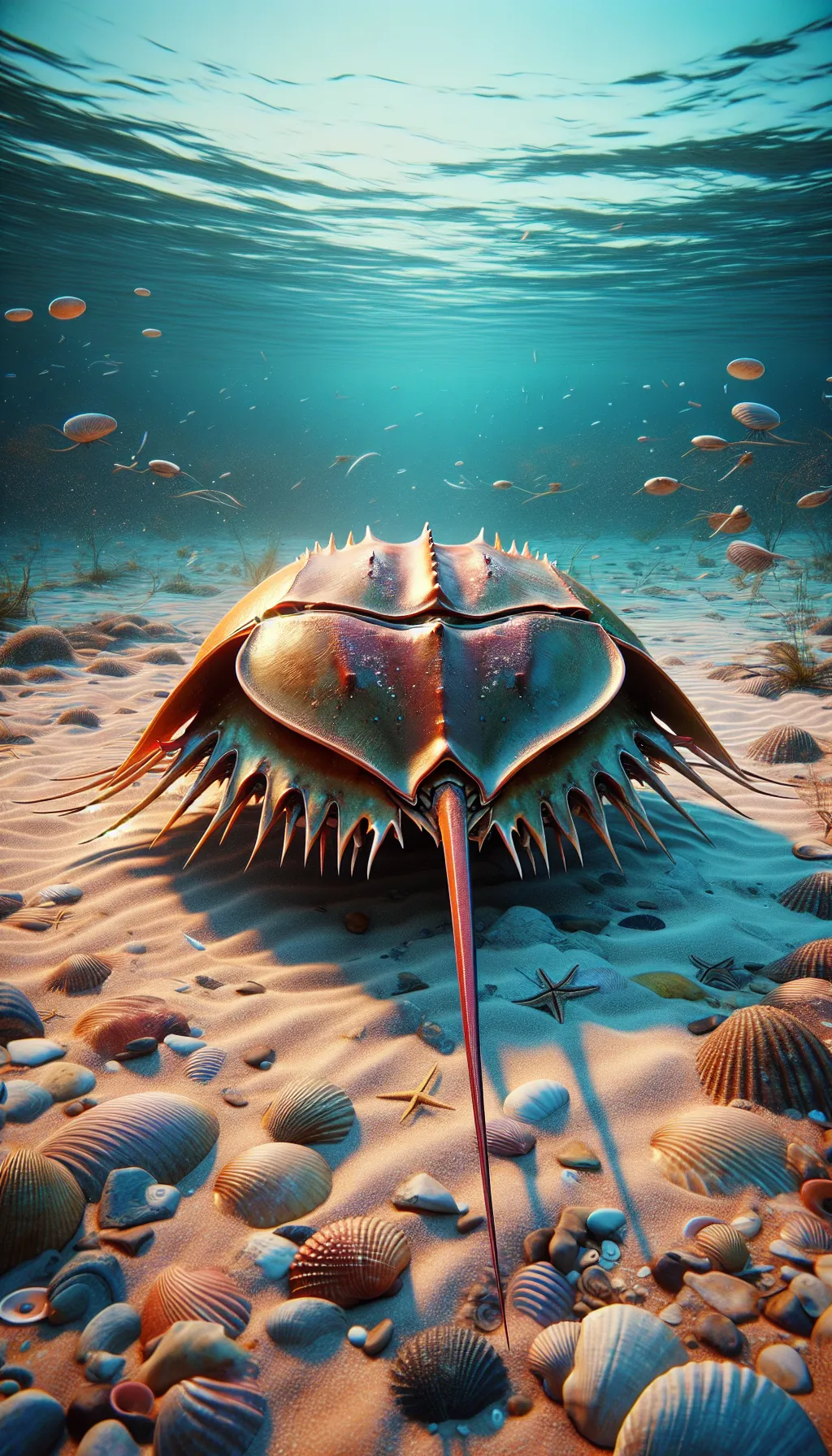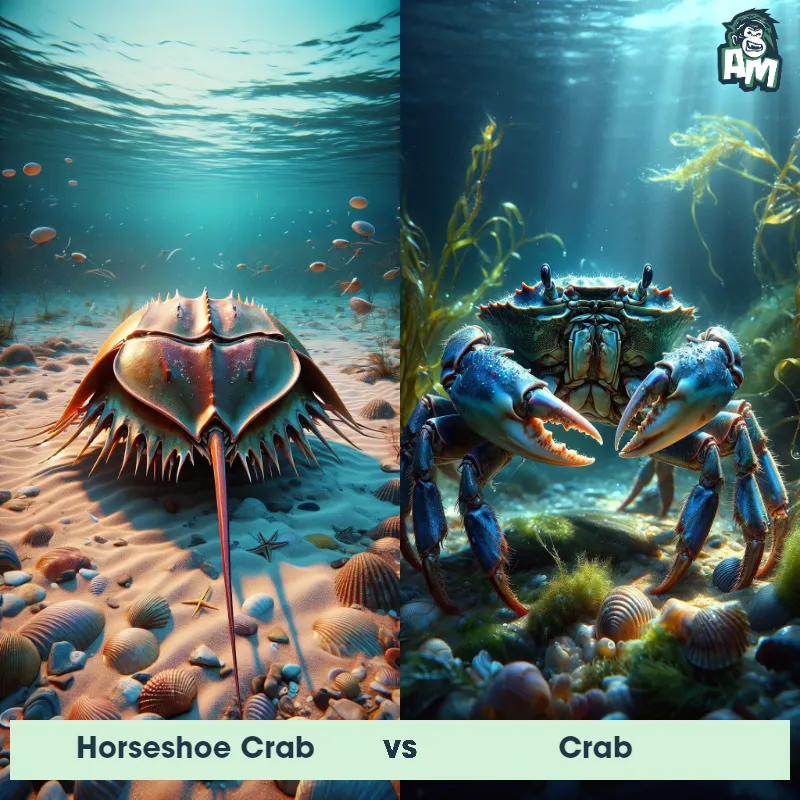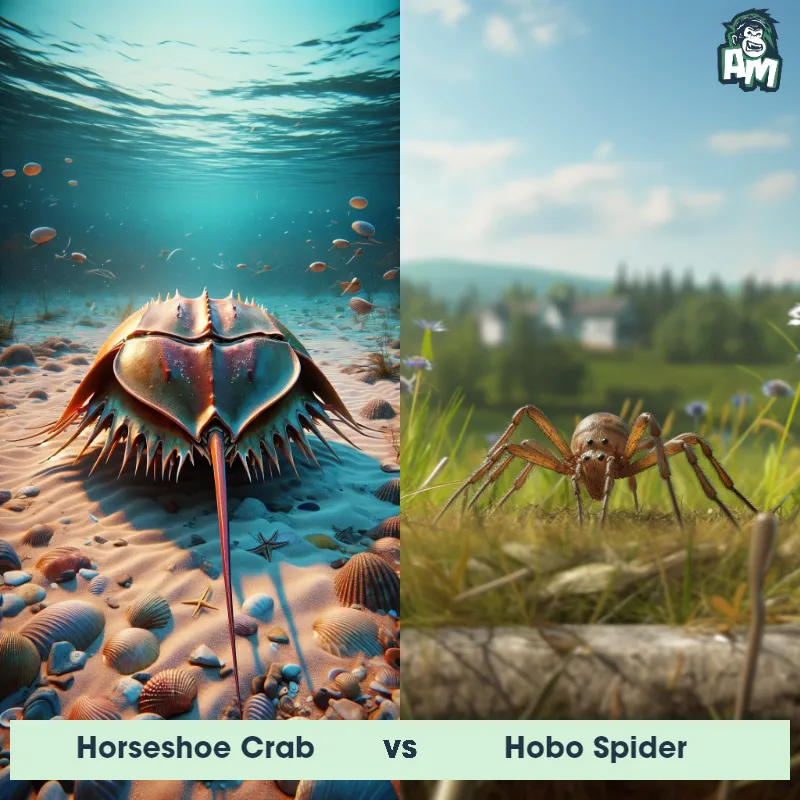The Horseshoe Crab
The Horseshoe Crab, also known as Limulus polyphemus, is a fascinating marine arthropod with a unique and ancient lineage. These creatures have a distinct horseshoe-shaped shell, which is typically green to brown in color with spiky edges. They have ten legs, and their body is divided into three sections: the cephalothorax, abdomen, and tail. Horseshoe Crabs are often found along the Atlantic coast of North America, and they play a crucial role in ecological systems as well as biomedical research due to their remarkable immune system.

| Horseshoe Crab | |
|---|---|
| Size | 14-24 inches (35-61 centimeters) in length |
| Weight | 2-4 pounds (0.9-1.8 kilograms) |
| Speed | 1 mph (1.6 km/h) |
| Key Strength | Exoskeleton provides protection and defense |
| Biggest Weakness | Slow movement and limited mobility |
| Scientific Name | Limulus polyphemus |
| Family | Limulidae |
| Habitat | Coastal areas of the Atlantic Ocean |
| Geography | Found in North America, primarily in the eastern coasts |
| Diet | Mollusks, worms, and small crustaceans |
| Lifespan | 17 years - 20 years |

The Horseshoe Crab
The Horseshoe Crab, also known as Limulus polyphemus, is a fascinating marine arthropod with a unique and ancient lineage. These creatures have a distinct horseshoe-shaped shell, which is typically green to brown in color with spiky edges. They have ten legs, and their body is divided into three sections: the cephalothorax, abdomen, and tail. Horseshoe Crabs are often found along the Atlantic coast of North America, and they play a crucial role in ecological systems as well as biomedical research due to their remarkable immune system.
Fun Fact: Horseshoe Crabs have been around for an incredible 450 million years, which means they predate the dinosaurs by millions of years, making them true living fossils.
| Horseshoe Crab | |
|---|---|
| Size | 14-24 inches (35-61 centimeters) in length |
| Weight | 2-4 pounds (0.9-1.8 kilograms) |
| Speed | 1 mph (1.6 km/h) |
| Key Strength | Exoskeleton provides protection and defense |
| Biggest Weakness | Slow movement and limited mobility |
| Scientific Name | Limulus polyphemus |
| Family | Limulidae |
| Habitat | Coastal areas of the Atlantic Ocean |
| Geography | Found in North America, primarily in the eastern coasts |
| Diet | Mollusks, worms, and small crustaceans |
| Lifespan | 17 years - 20 years |
Horseshoe Crab Matchups
We use AI to simulate matchups between the Horseshoe Crab and other animals. Our simulation considers size, strength, and natural predatory behaviors to determine the most likely outcome.

Can't find the Matchup you want?
Create Your Own MatchupHorseshoe Crab: Diet, Predators, Aggression, and Defensive Behaviors
What do Horseshoe Crabs eat?
Horseshoe crabs are omnivores and primarily feed on mollusks, worms, algae, and detritus. They are scavengers and use their specialized feeding appendages to grasp and crush their food before consuming it.
Do Horseshoe Crabs have any predators?
Horseshoe crabs have various predators, including birds (such as seagulls and herons), fish (such as striped bass and sharks), and some crustaceans. Their eggs are also preyed upon by animals like raccoons and foxes.
Are Horseshoe Crabs aggressive?
Horseshoe crabs are not considered aggressive towards humans or other animals. They are generally docile and harmless, although they may use their tail spine for defense if they feel threatened.
Do Horseshoe Crabs fight?
Horseshoe crabs do not engage in fights with each other or with other animals. They tend to avoid conflict and rely on their defenses, such as camouflaging themselves or using their tail spine, to protect themselves.
How do Horseshoe Crabs defend themselves?
Horseshoe crabs have several defense mechanisms to protect themselves from predators. They can burrow into the sand to hide, camouflage themselves by blending into their surroundings, and use their sharp tail spine to ward off potential threats. Additionally, they can flip themselves over if they end up on their backs, using their legs to right themselves.
What is the biggest weakness of Horseshoe Crabs in a fight?
The biggest weakness of Horseshoe Crabs in a fight is their slow movement and limited mobility. While their hard exoskeleton provides protection, they are not able to move quickly or evade predators easily. Their reliance on camouflage and defensive mechanisms means they may struggle in quick or agile confrontations.
Fun Fact: Unlike most animals, Horseshoe Crabs have blue blood due to a copper-based compound called hemocyanin, which helps transport oxygen through their circulatory system.
Fun Fact: Horseshoe Crabs have eyes that are located on top of their shell, allowing them to detect light, movement, and shadows, but they primarily rely on their multiple pairs of specialized legs to sense vibrations and navigate their environment.













